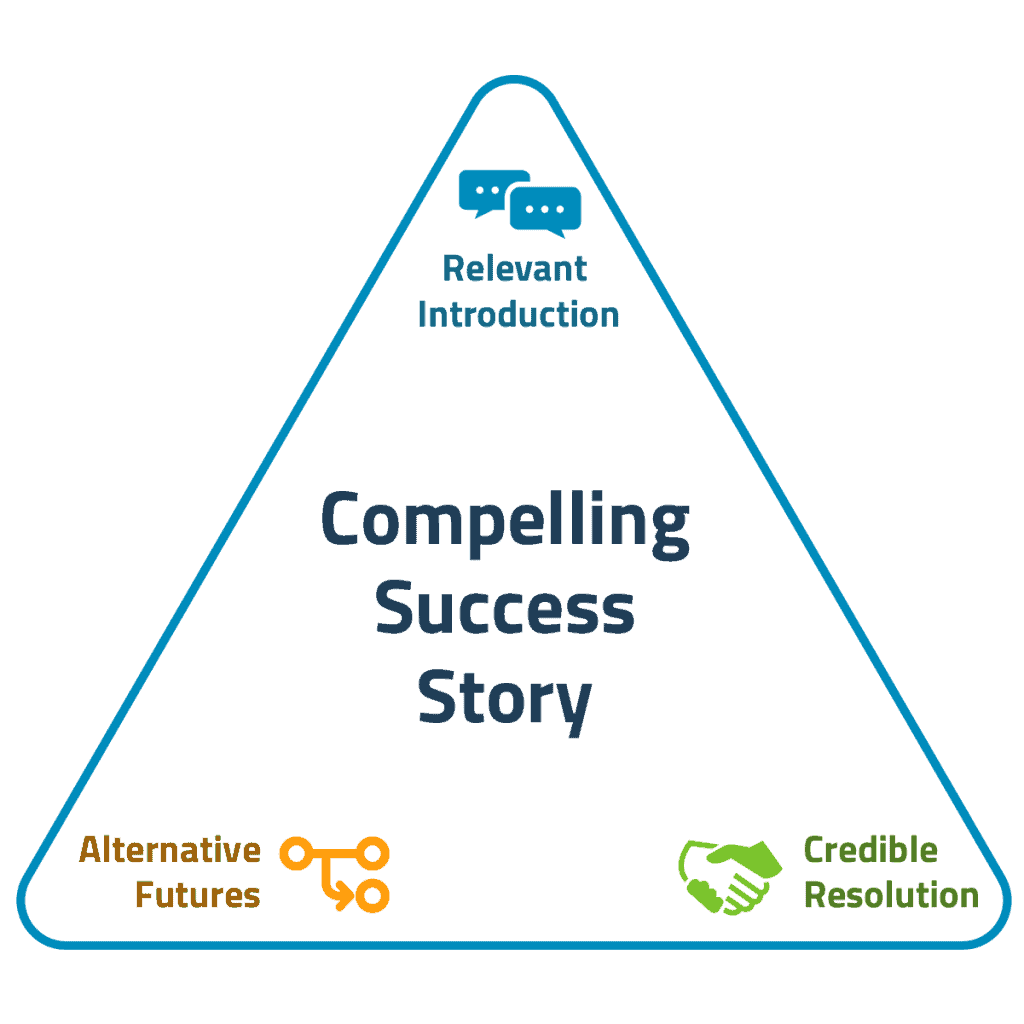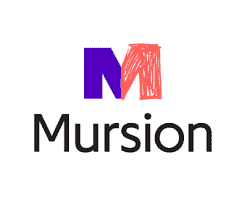 In the fall of 2019, I was on a video call with Christina Yu, Mursion’s Vice President of Marketing, strategizing on how the marketing team could do more to support the company’s rapid sales growth. In 2015 Mursion had started the market for immersive, virtual reality simulations with a unique blend of artificial intelligence and live human interactions to build human skills for leadership, diversity and inclusion, customer service and sales. By 2019 lots of corporate buyers had started to notice.
In the fall of 2019, I was on a video call with Christina Yu, Mursion’s Vice President of Marketing, strategizing on how the marketing team could do more to support the company’s rapid sales growth. In 2015 Mursion had started the market for immersive, virtual reality simulations with a unique blend of artificial intelligence and live human interactions to build human skills for leadership, diversity and inclusion, customer service and sales. By 2019 lots of corporate buyers had started to notice.
The topic of the call that day was success stories, and making them more accessible to the sales team. Christina described how Mursion’s CEO could wax eloquently on stories of success with a blue chip list of clients that included names like Best Western, Comcast, Coca-Cola, LinkedIn, T-Mobile, and the Air University. These success stories were among Mursion’s strongest and best assets to engage new prospects.
For early sales leaders and the CEO, who were intimately familiar with each success story, telling these stories in sales conversations came naturally. But by 2019, Mursion was scaling up and had expanded the team of senior account executives focusing on enterprise accounts and even added a second team of sales development representatives focused on small and mid-sized accounts. The expanded teams had a harder time internalizing and utilizing Mursion’s best asset. It became clear that the success stories were not making it effectively into sales conversations.
Mursion’s experience is not uncommon. Research from Prezi has shown that for nearly 9 in 10 buyers, and for 55% of business buyers, a great story or narrative is the most effective way to capture and keep their attention. Many companies, including Mursion, try to solve this by getting the marketing team to document their powerful success stories. However, according to a 2017 Content Marketing Institute study, up to 70% of marketing generated content never gets used by the sales team.
When it comes to unlocking the power of customer stories as a sales accelerator, the biggest challenge is usually the format. Most customer stories are shared as case studies that sit on a company website or live in highly formatted PDF files. Case studies are crucial to build evidence, particularly later in the sales process, but often fit awkwardly into a sales conversation.
Bringing stories alive in the sales process requires a shift from case studies to success narratives. Unlike case studies, a success narrative has an actionable storyline that points at achieving a key buyer goal that can be walked through verbally in a sales conversation. To be used consistently, the narratives also need to be organized into a success narrative library sortable by key use cases, market segments, and buyer roles so sales team members can quickly retrieve exactly the stories they need when working a deal.
A Place for Case Studies
The fastest path to a new sale for any company is “selling forward” the successes with existing clients. Case studies are the most commonly used format for sharing client success. Case studies are typically several pages and go into a client’s company background, the highlights of the client-vendor relationship, a discussion of the client’s market problem, and how the vendor partnership resolved this problem. They also often include a testimonial quote from one or more of the client’s executives.
Case studies have tremendous value later in the sales cycle. When a company gets to the point of considering a proposal from a vendor, the sales process expands. It starts to include new decision-makers, maybe a Chief Financial Officer or Vice President in a related department, who may not join the sales discussions directly. For these indirect influencers or decision-makers, the case study format works well. Each person can choose how and when to consume digital case studies on a website or in an email attachment. Some in this broader decision-making group may just read the headlines across a range of case studies.Others may read through several pages of text to get details on other clients and the vendor-client relationship.
But, the strengths of case studies in offering detail to indirect participants can make them a liability in an initial discovery call or a capability demo to a broader stakeholder group. The depth of detail and focus on the history of client partnership can make it hard to communicate a compelling story in just a few minutes, while keeping the focus on how the vendor can solve some of the buyer’s most important goals.
Shift to Success Narratives
So, the first step in unlocking power of client success is to make sure that all case studies are translated into success narratives that can be verbally shared in sales conversations. The goal of a success narrative is to quickly build trust that your company’s capabilities can achieve a buyer’s goal.
Brentt Brown, Mursion’s VP of Sales, put it this way: “We can’t all tell stories like our CEO, but we still need stories we can use in a call that are really full-bodied, grab a prospect’s attention, and are also easy for a sales team member to know how and when to use.”
Christina and Brentt’s work at Mursion on building an accessible set of success stories started with a recording session with their CEO walking through the highlights of about ten key current clients relationships. For each case, they discussed specific notes of the use case, industry sectors, and the roles involved in the setting up the partnership. The recordings were then turned into short, spoken success narratives of about 100 to 150 words which included the use of bullets to quickly capture the before-and-after impact of Mursion’s capabilities on a business goal. The spoken success cases were also turned into a slide library of success stories that could be easily integrated into pitch decks tailored to specific industries and use cases.
The focus on building success stories that could be used by a broader set of the sales team became a key part of scaling Mursion’s sales revenue by more than 250% year over year. Mursion started as a vendor to colleges and universities before finding that the corporate learning and development market was even more attractive. Having success narratives organized by use cases and industry vertical helped more team members successfully sell larger deals to enterprise companies.
Actionable Storyline
The Mursion team’s success had a lot to do with following a winning design for a success narrative. The success narrative is a critical part of what we call the value mapping phase of a buyer conversation. Once value discovery is complete and there is a clearer understanding of a buyer’s goals and gaps to goal achievement, the success narrative offers evidence on gap resolution and goal achievement.
There are four key elements of making a success narrative actionable in a sales conversation:
- Quickly aligning to a buyer goal
A buyer is going to be most interested in hearing more about how our product or solution has helped another client, when it is presented as direct evidence on how you can solve one of their primary goals. Mursion made it easy to link success narratives to buyer goals by assigning each success narrative to one or more identified value pathways for a specific buyer use case.
- Sharing recognized peer examples
There is nothing that will grab prospects’ attention more than telling them that there is a customer who is just like them. A direct peer in the same market segment or sector is ideal, but if you don’t have a perfect match you can also rely on a buyer in a very similar role who faced a similar challenge or use case. Mursion built recognized peer examples by linking success narratives to specific industry sectors and working to get a range of success narratives in each of their key growth sectors.
- Presenting alternative futures
Your company’s value pathways to a buyer’s critical goals are really about alternative futures. There is one bright future where you resolve their pains to move them toward their ideal state and make them a hero to their boss, team or end user. There is a second, darker future where they stay exactly in the same place and continue to suffer the pain of their current state. Your story needs to make those alternatives visceral and demonstrate that there is often a high cost of doing nothing.
- Offering a credible resolution
The final key element of a success narrative is a credible story on your capabilities resolving the gap in their current state and enabling the move to the ideal state. Having a clear business impact or a financial return on the dollars invested with a vendor is one way to show a credible resolution, but much more important is the listener’s sense of conclusion, that your capabilities had a clear “before” and “after” case.
Success Narrative Library
Making success narratives actionable in a sales conversation is key. Equally important is making it easy for front-line sellers to quickly access the right narrative for each sales conversation. Busy sales teams, focused on sourcing and driving deals to close, frustrate their marketing counterparts with their lack of awareness or interest in all the “great content marketing has developed.” The easiest way to get beyond the problem of “70% of content going unused” is to build a success narrative library that can be searched by business use case, market segment, and buyer role.
For the first two dozen or so success narratives, the library can easily live in Google Drive, Microsoft Sharepoint or some other shared drive technology. The success narratives can be organized in a shared document, several per page, or one per page in a shared presentation slide. Each success narrative should be labeled by use case, market segment, and buyer role to be quickly scanned and selected. As the number of success narratives increases, enablement teams need to move to a dynamically searchable database. Otherwise the sales team will be pulled off task to spend time searching for the right assets and will often default to using the same ones over and over again.
Apptio Software presents an excellent example of how a success narrative library can support scaling of sales revenue in a large sales organization. Apptio is the market leader for the Technology Business Management (TBM) market, having started this market in 2007. Apptio’s 2020 sales revenue is projected to be several hundred million compared to a couple million a decade ago.
The company’s growth strategy was “top down” focused on getting the top 8 companies in every target vertical, including Banking and Financial Services, Chemicals, Construction, Consumer Products, Energy, Food and Beverage and several others. Apptio had early success in getting top brands from the Fortune 500 to become customers. With success in getting top companies in many sectors, Apptio then needed a strategy to move from the early adopters to a much broader set of company buyers. Apptio’s success story library, which took almost two years to perfect and make searchable as a web-based resource, became a key asset to support this growth transition.
Apptio’s sales approach focuses on helping buyers see the potential value in business relationships with this thought provoking question: “What if you could understand and optimize every dollar of business IT spend?” A key part of each second or third prospect conversation is building a targeted business case for a purchase by drawing on examples of other existing clients with a similar business problem and in a similar industry. Having a business case linked to peer examples helps make very specific what “optimize every dollar of business IT spend” could actually mean in business and financial terms.
The initial Apptio team that used this targeted business case approach to land the top 8 accounts in every target vertical was a sophisticated group of 15 strategic sales executives. Top performers and highly motivated, they were pretty quick studies in pulling together the right success narratives for each of their more mature prospects. Scaling the team from 15 to several hundred, however, required the more sophisticated library of success narratives. The searchable library of success cases organized around key use cases, industries, and buyer roles made it possible for this larger team to find the specific client stories and examples they needed.
For both Mursion and Apptio, well designed success narratives and a success narrative library were key elements of moving from an “evangelical to repeatable” growth story. Making the stories easy to access and incorporate into buyer conversations allowed sales teams at both companies to more deeply engage prospects who were not early adopters and needed more evidence before taking action.
Here is a quick overview of the structure of Mursion’s and Apptio’s success stories and libraries.
|
Growth stage provider of immersive VR training for human skills |
Library Structure
Success Story Structure
|
|
Market leader for Technology Business Management (TBM) applications |
Library Structure
Success Story Structure
|
Assessing Your Success Narratives: A Simple Self-Diagnostic
Here are questions you can ask yourself as you think about effectively equipping your sales team to share customer success stories that increase your chances of winning business:
- Have you developed short spoken success cases that can be told quickly?
- Do they provide visceral evidence on the impacts of your product?
- Have you organized those spoken success cases into a searchable library?
- Is the library organized to make it easy to find success cases by specific use cases, segments and buyer roles?
- Do you teach your sales team how to tell stories? Or do you evaluate this skill?


